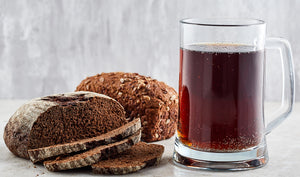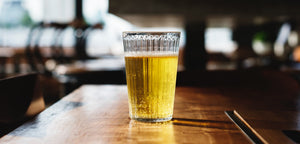Country of Origin

History
The term "stout" dates back to the 1670's and was first used to describe a strong porter. Porters originated England in the early 1720's and became a popular beer because they lasted longer than lighter beers which spoiled easily. Porters were brewed with dark malts and a higher alcohol content, and large quantities were exported from England to Ireland, and were soon being brewed by Arthur Guinness in Dublin.
By the 1840's, Guinness began brewing stout with the use of a new invention, the malt kiln. Malt kilns, invented by Daniel Wheeler, allowed for darker roasting of malts, and gave brewers more options for beer flavour profiles and colours.
While stouts have several variations, Irish stouts are known for being drier than traditional British stouts. The term "dry stout" or "Irish stout" is used outside Ireland to distinguish this national style from creamier stouts with lactose or oatmeal.
To this day, Guinness is still the most popular stout in the world.
Profile
A dry stout can vary from dark brown to jet black in colour. It's aroma has notes of roasted coffee and sometimes cocoa. There should be very little to no hop aroma in a dry stout.
Dry stouts have a medium to full mouthfeel, and low carbonation. These stouts also present a slightly creamy taste on the palate, but not as creamy as a regular or milk stout.
The main flavour profile in a dry stout is the dark malt, sometimes with a dry coffee or bittersweet chocolate taste. While the bitterness of the hops should not take a leading role, there is a subtle bitter taste, balanced by the creaminess.
Serving
Stouts in general should not be served as cold as lighter ales. A serving temperature of 45 ºF-50 ºF (7 ºC-10 ºC) is recommended. While there is no rule as to what kind of glass a stout should be served in, many opt for a Nonic or Tulip pint glass for a classic look.
To achieve that famous cascade foam effect in your stout, pour from a nitro tap. This will not only make your stout look amazing in your glass, but give it a creamier mouthfeel.
Food Pairings
The classic food pairings for a dry stout are beef based dishes like stews and grilled meats. However, because of their drier profile, Irish stouts are a perfect accompaniment to chocolate based deserts, and pair extremely well with oysters - a traditional pairing when oysters and stout were plentiful and inexpensive in the 19th century.



Brewing tips
- The Darker The Malt, The Better. This beer requires dark malts. Use pale ale malts for your base, but go right to the dark for the rest of your grain bill.
- Mash Temperature. If you're brewing all grain, your mash temperature is important for this style of beer. Dry stouts need a lower mash temperature than other styles. Stick to 148 ºF-150 ºF for this one.
- The Right Hops. The last thing you want in a dry stout is a hoppy bitterness coming through. While hops are necessary for balancing flavour when brewing, for this style you'll want to go easy on the hops and pick the right ones. Low alpha hops like East Kent Golding or Fuggles are great for dry stouts.
Want to brew your own Irish Stout?
Try Brew HQ's Irish Stout Pub Draught recipe kit.



